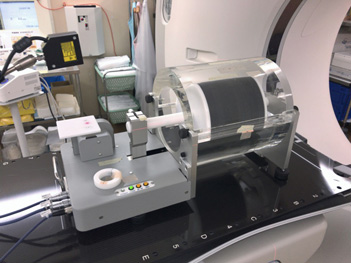2019.4.26: Tohoku University Division of Medical Physics seminar 2019
The 2019 Tohoku University Division of medical Physics seminar has been held in Tohoku University Seiryo campus, Tohoku University, Sendai, Japan.
■Date: 2019.04.26
■Venue: Tohoku University Seiryo campus, Tohoku University, Sendai, Japan
■Conference name:2019 Tohoku University Division of medical Physics seminar
Ryutaro Ikeda(D2)
We are pleased to report that the 1st Laboratory Seminar in the Department of Radiation Oncology at Tohoku University was held on April 26, 2019 on the Seiryo Campus of Tohoku University.
This seminar was held for the purpose of exchanging information on research between general students and working students who rarely interact with each other. On the day, a total of 19 people, including 15 master and doctoral students of our laboratory and 4 professors, attended the seminar, and three students, Mr.Abe(D2), Mr.Takayama(D3), and I gave presentations.
Mr. Abe gave a presentation on “Prediction of patient prognosis using MVCT-based radiomics,” a technique called radiomics that analyzes clinically obtained radiological images using various methods to extract features that are highly relevant to patient prognosis and use them to predict prognosis. Radiomics is expected to play an active role in the field of radiology in recent years, and I was able to listen to a report on its cutting-edge research.
I gave a presentation on “Influence of CT imaging conditions on deformable image registration,” which is an image processing technique widely used in the field of radiation therapy. Focusing on the fact that DIR uses image intensity information to deform images, he reported that the accuracy of DIR may also change depending on the image quality of CT scans.
Mr. Takayama reported on his research into the use of AI in the field of radiation therapy, where AI is now expected to play an active role and various approaches to radiation therapy are being attempted. In his report, Dr. Takayama mainly introduced papers on the use of AI in radiotherapy.
The seminar was held over dinner, and the participants were able to engage in lively discussions in an atmosphere conducive to exchanging opinions, bringing the students and faculty even closer together. We hope that the next and subsequent seminars will also provide an opportunity for exchange across the borders between master’s and doctoral students, leading to more active research activities.

Variable deformation dynamic phantom for DIR verification introduced in Ikeda’s report.

We had a lively discussion over soup curry for dinner.
Some of the opinions were more caustic than the curry.
